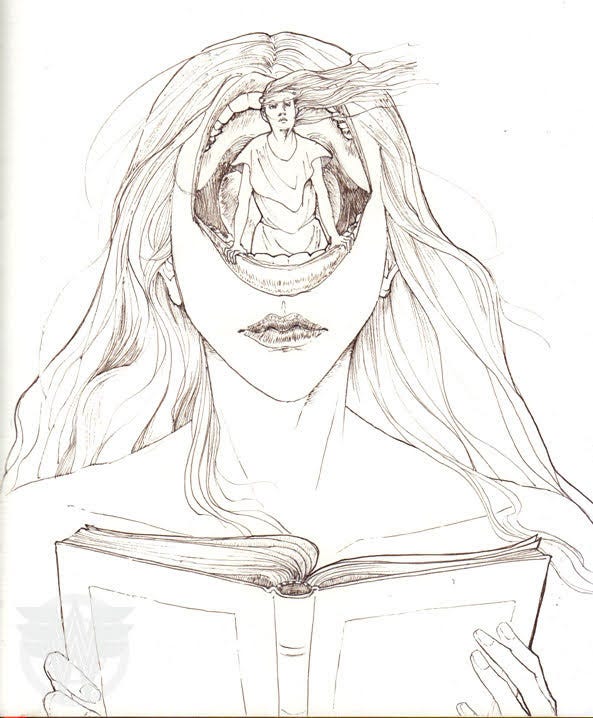transformative art | truth & trauma
For the first time in wonder | wander | world, we’re taking a writing class together! It was even more of an eye-opening experience than we expected, and quite emotional.

As the class progressed I noticed a thread of anger coming up in my work: upset, resentment and other strong emotions that don’t usually come up in my other writing. Where does it come from?

Joanne Harris, the author of the delightful Chocolat, recently had a conversation with a reader about writing trauma. “Make sure you’re emotionally prepared for what comes next,” she cautions. We reveal a lot of ourselves when we write about trauma, whether it’s our own or not.

I tend to tell others that I am an illustrator, not a writer. My writing is often private: comfort fiction made for myself and a few friends, a poem here and there. The steadiest writing habit I have is this blog, and there is rarely anger or trauma there. It’s in reading that I find catharsis.

The fey-gothic fantasy author Francesca Lia Block talks about “turning your pain into art” in her book The Thorn Necklace: Healing Through Writing.

“If demons appear in my dreams,” she writes, “I write them down, demon by demon, word by word, in my journal when I wake.”

Block named her book after the painting by Frida Kahlo, who also created gorgeous artwork on the spinal braces she perpetually wore for her excruciating chronic pain.

Frida painted Self-Portrait with Thorn Necklace and Hummingbirds after she divorced Diego Rivera and ended her affair with photographer Nickolas Muray — an image that “elevates unbearable grief to shocking beauty.”

Courtesy of fridakahlo.org
There is a powerful catharsis in turning a horrific event into a piece of art. Something that was too painful to think about becomes a painting to be looked at again and again, a song to listen to. The traumatized person shape-shifts from victim to creator through powerful, compelling work.

Psychologists Susan Lutgendorf and Philip Ulrich published a study finding that writing about a traumatic event helped the person who experienced it deal with what had happened and alleviated some of their trauma in its retelling or by expressing it.

Interestingly, subjects who only focused on the emotions of the event reported deteriorating mental and even physical health. The key was to write with conscious thought, processing the experience and the emotions and circumstances around it.

So far my writing hasn’t been particularly soul-scouring. But it’s a comfort to know that we don’t need to open old wounds to heal them. By bringing these memories into the light, looking at them and seeing how we can transform the thoughts and emotions that they carry, we can renew and remake ourselves.
Originally published at http://woaworld.blogspot.com.
